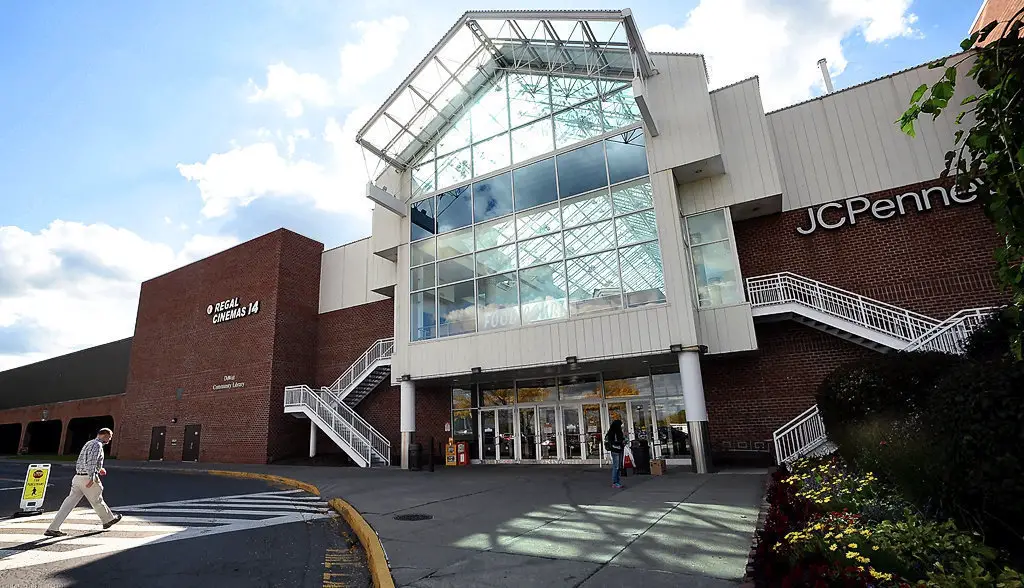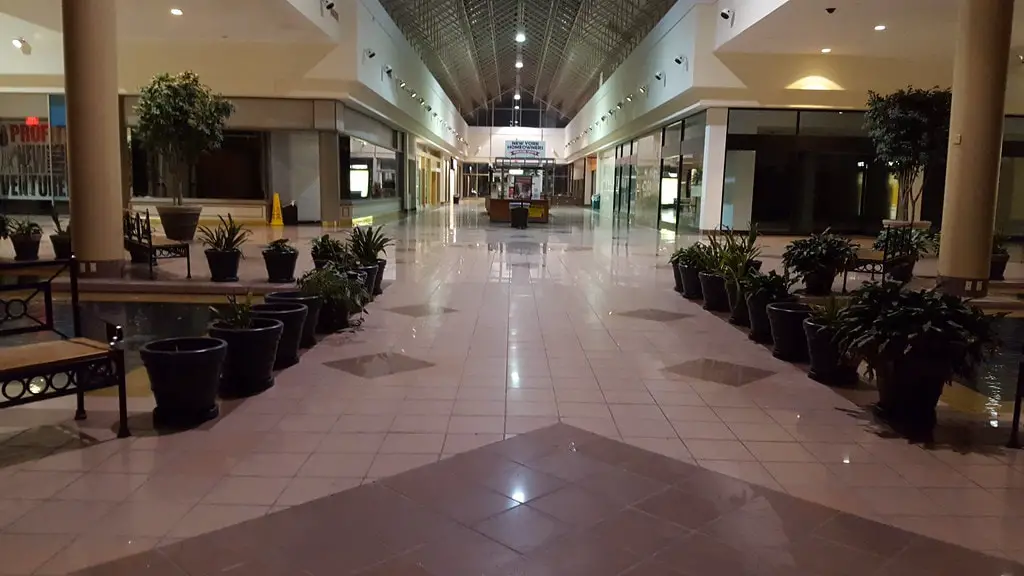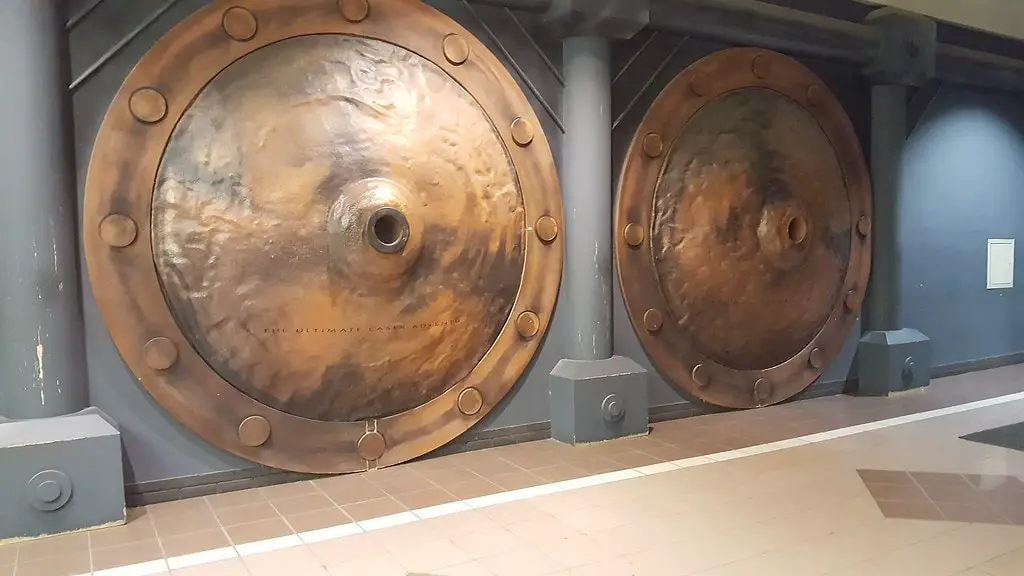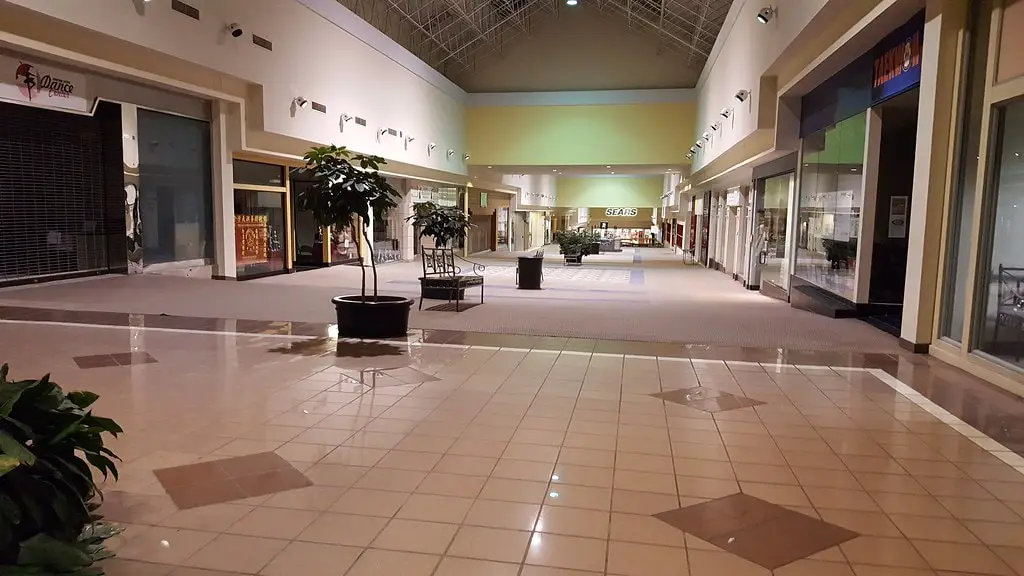The Dawn of ShoppingTown Mall
Ah, the 1950s—a time of poodle skirts, rock ‘n’ roll, and the birth of ShoppingTown Mall in Dewitt, an eastern suburb of Syracuse, New York.
Imagine the excitement when it opened its doors as an open-air shopping center on March 3, 1954. The mall was a spectacle, boasting initial tenants like J. C. Penney, F. W. Woolworth, and Walgreens.
“A mall isn’t just a place to shop; it’s a microcosm of community life.”
The grand opening gala was the talk of the town. Picture this: streamers, balloons, and the buzz of a community gathering to celebrate something entirely new.
It was a four-day extravaganza that had everyone marking their calendars. Addis, a local Syracuse department store, joined the project in October 1954, adding to the mall’s allure.
Moving on, the mall wasn’t content with just being a shopping center. It had ambitions. New stores like Flah & Co and W. T. Grant started construction in 1955-1956, making it clear that ShoppingTown Mall was here to stay and grow.
The mall became a hub for social events, too. From holiday parades to summer festivals, it was the place to be.
Additionally, the mall started to diversify its offerings. It wasn’t just about shopping; it was about providing a complete experience.
Restaurants, cafes, and even a small amusement park for kids made it a family destination. The mall had become a cornerstone of community life in Dewitt.

The Transition to an Enclosed Space
Fast forward to the 1970s, and you’ll find ShoppingTown Mall undergoing a mesmerizing transformation. In 1973, the mall closed its space, turning it into an “all-climate mall.”
Edwards and J. C. Penney were the anchors steering this ship’s transformation. But life wasn’t all smooth sailing—Edwards had to close its doors amidst bankruptcy in November 1973.
“Change is the only constant, especially in the world of retail.”
Additionally, the mall had its share of trials and tribulations. A fire in April 1967 led to significant restocking and remodeling for Flah & Co.
Another fire in June 1974 caused an estimated $500,000 in damages, primarily affecting W. T. Grant. But like a phoenix, the mall rose from the ashes, stronger and more resilient.
In contrast, the mall’s transformation was more than just physical. It was about adapting to the times. The mall started hosting events like fashion shows and car exhibitions, becoming a cultural hub.
Moreover, the mall started to focus on customer experience. New amenities like escalators, air conditioning, and Cinema National were added. The mall was evolving, clearly setting the bar high for what a shopping center could be.

The Golden Years of ShoppingTown Mall
Ah, the golden years! The mall was bustling, and Wilmorite Properties took control through a partnership with Eagan in the summer of 1989.
The 1990s were a time of prosperity and growth for ShoppingTown Mall. In 1991, a whopping $53 million remodel added a new wing and a food court.
“The golden years aren’t a time period; they’re a state of mind.”
In contrast, the ownership changed hands again in 2004 when Macerich bought the mall as part of several properties for a staggering $2.3 billion. Yes, a billion with a “B”! The mall was such a hot commodity that even Kaufmann’s transformed into Macy’s in September 2006.
But what’s a story without a plot twist? In March 2007, Macerich announced plans for an open-air plaza with new shops. However, due to the economic recession, this plan never materialized. It was a sign of things to come.
Moving on, the mall continued to innovate. It introduced new features like a play area for kids and hosted concerts. It was a place where you could spend the whole day and still find something new to do.
Additionally, the mall became a hotspot for holiday shopping. Black Friday sales were a spectacle, with people lining up hours before the stores opened. It was a time when the mall was at its peak, and it seemed like nothing could bring it down.

The Decline and Exit of Anchor Stores
Fast forward to the 2010s, and the mall’s atmosphere changes. Macy’s announced its closure in March 2015, and Dick’s Sporting Goods relocated in October. JCPenney followed suit, announcing its exit in April 2016.
In contrast, the mall tried to reinvent itself. Pop-up stores and seasonal markets appeared, but reviving the mall’s former glory wasn’t enough. The mall started to look like a ghost town, with empty storefronts becoming the norm rather than the exception.
Unfortunately, the mall couldn’t keep up with the changing times. Sears, the last anchor store, announced its closure in September 2018, leaving the mall without any major tenants.
Moreover, the mall’s decline wasn’t just about the exit of anchor stores. Online shopping started to take over, and the mall struggled to compete. Even efforts to introduce a digital presence and online shopping options for its stores couldn’t turn the tide.

The Closure and Legal Battles
The mall closed its doors in March 2020, marking the end of an era. In September 2020, Moonbeam Capital issued eviction notices to all the tenants still occupying the mall, clearing the path for an upcoming $400 million development.
Moving on, the closure wasn’t just a loss for shoppers but for the community. The mall had been a gathering place for decades, and its closure left a void that was hard to fill. Community events, social gatherings, and even weekend outings had to find a new home.
Additionally, the legal battles were intense. Onondaga County had to navigate a web of legalities to acquire the mall. It was a complicated process that involved multiple stakeholders, including the existing tenants and the local government.
The Future: District East
Don’t pack your bags just yet! The mall is set to transform a new $400 million development called District East. This isn’t just a facelift; it’s a complete makeover.
The project will include residential components, a movie theater complex, and retail space. And let’s not forget the new sidewalks, bike paths, and walking trails that will spearhead the recently enhanced Empire State Trail.
In contrast, the new development aims to be more than just a shopping center. It wants to be a community hub with recreational areas and cultural spaces. It’s a bold vision, and if it succeeds, it could set a new standard for what a mall can be.
Moreover, the project is expected to be a phased development. This means it will roll out in stages, allowing the community to enjoy the new amenities before completing the project. It’s an exciting time for Dewitt, and the future looks bright.
Conclusion
The ShoppingTown Mall has been a rollercoaster of ups and downs, but its story is far from over. With the upcoming District East development, the mall is set to begin a new chapter.
It’s a testament to the ever-changing landscape of retail and community spaces. So, the next time you’re in Dewitt, watch for the new and improved ShoppingTown Mall—because this is one adventure you won’t want to miss.

